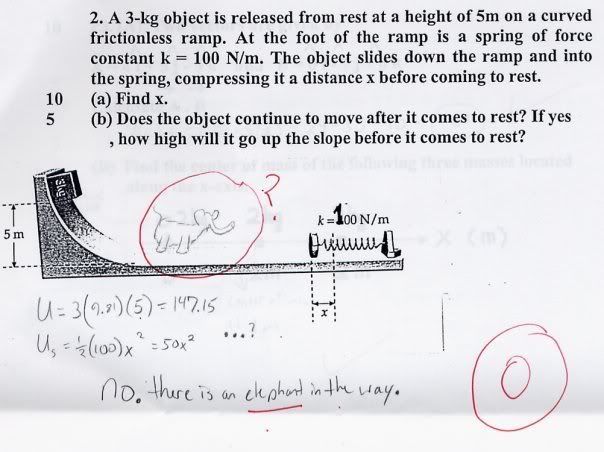|
calculus help please! (pg. 5)
|
View this Thread in Original format
| Nrg2Nfinit |
| quote: | Originally posted by Inconspicuous
 |
lol that made my day
here now try this i get 3 this time. But technically that integral should be the same as the other one. The final solution should be 3.
 |
|
|
| Omega_M |
| dude, in my opinion, unless the function is symmetric about the origin, you cannot change the limits from -1...1 to 2(0..1) |
|
|
| Nrg2Nfinit |
| the conclusion that ive come to is that Equation 1 and equation 2 must be different hence why i get a different solution. But logically if you half the range and multiply it by 2 you should get the same area by going from -1 to 1 |
|
|
| Nrg2Nfinit |
| quote: | Originally posted by Omega_M
dude, in my opinion, unless the function is symmetric about the origin, you cannot change the limits from -1...1 to 2(0..1) |
it is symmetric about the origin.
it looks like this /\ where the peak is at the origin. aneven function with the even side at 2+x (left) and the right side at 2-x |
|
|
| Omega_M |
| quote: | Originally posted by Nrg2Nfinit
it is symmetric about the origin.
it looks like this /\ where the peak is at the origin. aneven function with the even side at 2+x (left) and the right side at 2-x |
2+x on left and 2-x on right means they are 2 different functions.
y = 2-x is not symmetric about origin.
for x=-1, y = 3
for x = 1, Y = 1
For symmetry, the function Y(-1) = Y(1).
You need to split the integral from -1 to 0 and 0 to 1 and then solve. Between - 1 to 0, use 2+x, between 0 and 1, use 2-x. The answer is 3. |
|
|
| Omega_M |

No ? |
|
|
| KandyKid_420 |
| The corret answer = NO VAGINA. |
|
|
| Nrg2Nfinit |
| 2+x and 2-X is symmetric about the y-axis. |
|
|
| Omega_M |
| but do you not see they are 2 different functions ? :wtf: Hence you need to split the integral as I did..and I'm getting 3, which is the answer in your book. |
|
|
| Nrg2Nfinit |
| quote: | Originally posted by Omega_M
but do you not see they are 2 different functions ? :wtf: Hence you need to split the integral as I did..and I'm getting 3, which is the answer in your book. |
yeah i can see that
i guess i dont understand hte concept of even and odd functions. If a function is even can we automatically half the integral range and double it? |
|
|
| Omega_M |
| quote: | Originally posted by Nrg2Nfinit
yeah i can see that
i guess i dont understand hte concept of even and odd functions. If a function is even can we automatically half the integral range and double it? |
For the function y(x) to be even, the condition y(x)= y(-x)must be satisfied. The function needs to be continuous. Like cos(x). You can check that cos(x) = cos(-x). Hence it's even symmetric. If you look at the equation you provided, it really is 2 different functions, not one. Hence it's neither even nor odd. But if it is even then yes, you can half the range and double the integral. |
|
|
| Nrg2Nfinit |
| quote: | Originally posted by Omega_M
For the function y(x) to be even, the condition y(x)= y(-x)must be satisfied. The function needs to be continuous. Like cos(x). You can check that cos(x) = cos(-x). Hence it's even symmetric. If you look at the equation you provided, it really is 2 different functions, not one. Hence it's neither even nor odd. But if it is even then yes, you can half the range and double the integral. |
here it is. Question 1)
http://math.carleton.ca:16080/~math..._test1a_sol.pdf
it states that the function is even. |
|
|
|
|